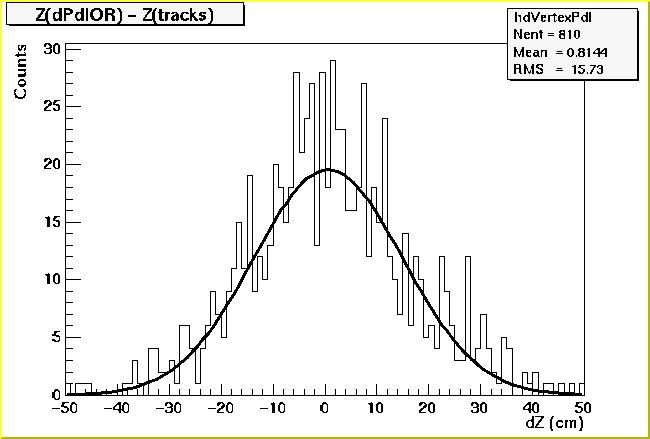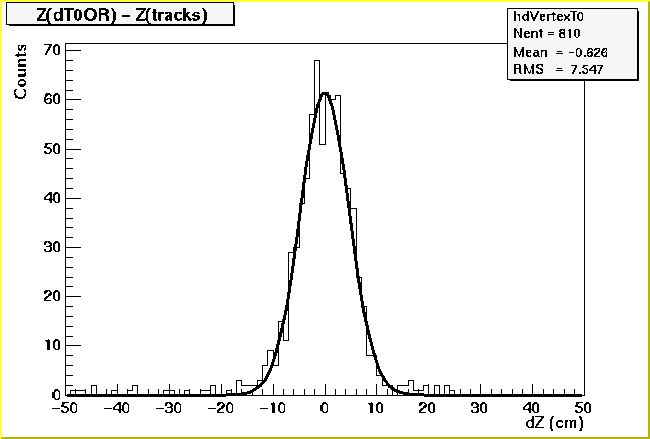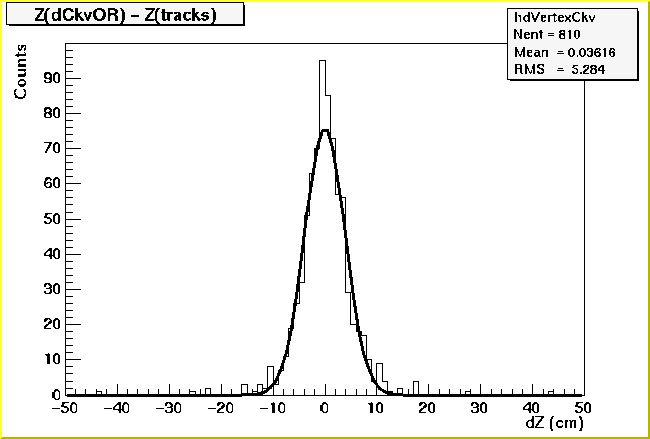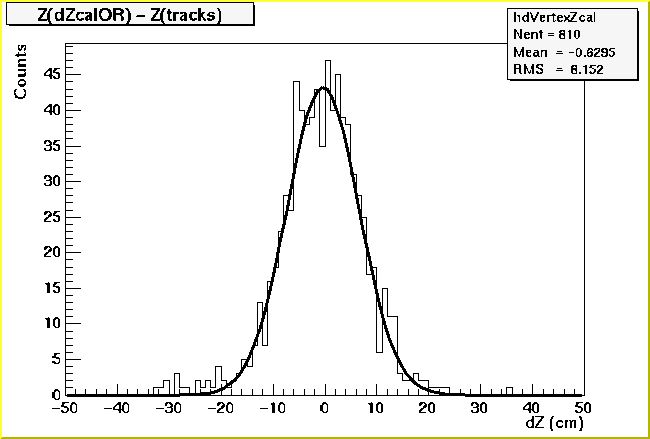In preparation of implementing an on-line vertex cut, derived from the time difference between the OR signals from various trigger counters, we have studied the properties of these OR signals. The OR signals from the following counters were included in this study:
The OR signals are provide by the various discriminators that are connected to these counters. The OR signals are send to the counting house and their arrival time is digitized using the Fastbus TDC located in slot 8. The Start of the TDC is generated by the paddle counters. Although there is a significant jitter in the START, this jitter does not effect the current study, since the vertex obtained from the OR signals depends only on the difference in the arrival time of the OR signals, which is independent of the timing of the START of the TDC.
The figures below show the result of the analysis of the first 2 sequences of run 7583. For each detector system, the timing of the OR signals is extracted from the Extra detector channels. The time calibration for each channel was obtained from a time calibrator run. The time difference between the ORs for each detector system was obtained by calculating the difference between the negative and the positive counters (tNOR - tPOR). The vertex position could be calculated from this difference as follows:
zVertex(from ORs) = 30*(tNOR - tPOR)/2.
The vertex resolution is obtained from a comparison between the vertex obtained from the OR signals and the vertex obtained with the various silicon detectors. The resulting resolutions are summarized in the following table.
|
Detector System
|
Vertex Resolution (cm, 1 sigma)
|
|
Paddles
|
14.8
|
|
T0
|
4.8
|
|
Cherenkov
|
4.0
|
|
ZCal
|
6.9
|
Resolution of the vertex obtained from the time difference between the OR signals from the various detector systems.
Based on the numbers shown in the Table, both the Cherenkov and the T0 counters can be used to generate an on-line vertex trigger.
Time difference between the positive and negative paddle OR signals. The red superimposed histogram shows the time difference for those events that have been flagged as collision events (e->IsCollision() is kTRUE).
The reconstructed vertex position (obtained from RMSSelVertex) versus the time difference between the positive and negative paddle counters.

Difference between the vertex obtained from the time difference between the paddle ORs and the vertex obtained using from RMSSelVertex. The vertex resolution obtained with the paddle counters is 14.8 cm (1 sigma).
Time difference between the positive and negative T0 OR signals. The red superimposed histogram shows the time difference for those events that have been flagged as collision events (e->IsCollision() is kTRUE).
The reconstructed vertex position (obtained from RMSSelVertex.) versus the time difference between the positive and negative T0 counters.

Difference between the vertex obtained from the time difference between the T0 ORs and the vertex obtained using from RMSSelVertex. The vertex resolution obtained with the T0 counters is 4.8 cm (1 sigma).
Time difference between the positive and negative Cherenkov OR signals. The red superimposed histogram shows the time difference for those events that have been flagged as collision events (e->IsCollision() is kTRUE).
The reconstructed vertex position (obtained from RMSSelVertex.) versus the time difference between the positive and negative Cherenkov counters.

Difference between the vertex obtained from the time difference between the Cherenkov ORs and the vertex obtained using from RMSSelVertex. The vertex resolution obtained with the Cherenkov counters is 4.0 cm (1 sigma).
Time difference between the positive and negative ZCal OR signals. The red superimposed histogram shows the time difference for those events that have been flagged as collision events (e->IsCollision() is kTRUE).
The reconstructed vertex position (obtained from RMSSelVertex.) versus the time difference between the positive and negative paddle ZCal.

Difference between the vertex obtained from the time difference between the ZCal ORs and the vertex obtained using from RMSSelVertex. The vertex resolution obtained with the ZCal counters is 6.9 cm (1 sigma).